Developing Intentional Ecclesiastical Mentors for Women in Ministry
“Encouraging and Strengthening Others”
The locally established African Methodist Episcopal (AME) Church Women in Ministry groups could benefit from employing their primary professional resource—namely, the Holy Scriptures, to mentor women for leadership as ministers, pastors, presiding elders, component leaders, and bishops in the Church. According to Gordon F. Shea, “mentoring is the fundamental form of human development where one person invests time, energy and personal know-how in assisting the growth and ability of another person.” [1] The practice has been used successfully in business, government, and education, and is evident in the Old and New Testaments as a way to ensure succession, advancement, leadership, and the holistic embrace of faith. [2]
Why is female clergy mentoring needed in the church?
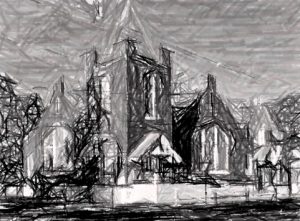 Many women clergy have devoted years of their lives to theological and other professional training only to find themselves figuratively sitting in ministerial dugouts waiting for their names to be called or in outfields where few balls travel. A biblically based, “grassroots” type of intentional mentoring program could help polish these women for stronger and upward mobility, expanded ministry and community building, and by imparting confident leadership.
Many women clergy have devoted years of their lives to theological and other professional training only to find themselves figuratively sitting in ministerial dugouts waiting for their names to be called or in outfields where few balls travel. A biblically based, “grassroots” type of intentional mentoring program could help polish these women for stronger and upward mobility, expanded ministry and community building, and by imparting confident leadership.
Several of these women have bi-vocations in engineering, science, sociology, education, administration, law, business, and medical professions. Se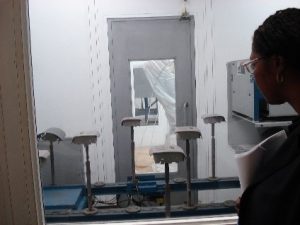 nior clergywomen focused on mentoring could show them the way to travel, be resources for potential financial as well as spiritual support, help to develop them for expanded service, or encourage them to use their previous professional experiences to assist one another in ministry.
nior clergywomen focused on mentoring could show them the way to travel, be resources for potential financial as well as spiritual support, help to develop them for expanded service, or encourage them to use their previous professional experiences to assist one another in ministry.
 Why should females embrace mentoring from a biblical perspective?
Why should females embrace mentoring from a biblical perspective?
Here are three connected reasons: First, God intentionally created the female in God’s image because male “alone” was unacceptable and required “them” to multiply (Gen. 1:27–28).[3] As such, mentoring will help women affirm their likeness in God’s image and their semblance of God’s manners as ezer.[4] Second, female mentoring can both protect and memorialize women’s accomplishments and positive stories, especially since they may be overlooked or misinterpreted by biblical interpreters, church leaders, ministers, and laity. Third, mentoring might also help to clarify misinterpretation of those biblical texts that have been problematic and crippling to women in ministry (see, e.g., 1 Cor. 14 3). The integrity of God’s story is not holistically interpreted without the conjoined perspective of women’s voices, interpretations, and contributions. As such, women have a responsibility to come to the biblical interpretation table and to address the scriptures especially in their roles as ministers. Walter Brueggemann makes a clear case for this when he says, “New truth from God is likely to come as a cry and a protest of the weak, the powerless, the disinherited ones.” He further states, “In our own time, it is the economically disinherited, the politically powerless, the ecclesiologically excluded who cry a new truth from God.” He then makes the example:” To take a case in point, from where is to come the claim for the ordination of women in the church? It is a cry which has to come from those who most feel the pain of exclusion.”[5]
In certain circles, people might ask if such mentorship could be accomplished easily enough across genders: with a man mentoring  women or a woman mentoring men. The answer, generally, would be positive on both counts since clergy struggles are similar. But it remains clear that female clergy face obstacles unique to them that are not faced by men, as by other female professionals. These may include implicit societal misogyny, misunderstanding of females’ adeptness for serving in certain roles, secret wariness by men and women of the rising influx of women into ministry armed with the educational requirements to lead, women-to-women and men-to-women conflicts, or even the unfamiliarity of women working in male-dominated fields.[6] Obstacles such as these only exacerbate the struggles female clergy face.[7] Within the confines of the church, women in ministry will best confront such difficulties with the help of the Holy Scriptures.
women or a woman mentoring men. The answer, generally, would be positive on both counts since clergy struggles are similar. But it remains clear that female clergy face obstacles unique to them that are not faced by men, as by other female professionals. These may include implicit societal misogyny, misunderstanding of females’ adeptness for serving in certain roles, secret wariness by men and women of the rising influx of women into ministry armed with the educational requirements to lead, women-to-women and men-to-women conflicts, or even the unfamiliarity of women working in male-dominated fields.[6] Obstacles such as these only exacerbate the struggles female clergy face.[7] Within the confines of the church, women in ministry will best confront such difficulties with the help of the Holy Scriptures.
What do the experts say about biblical mentoring?
Rickie Moore makes a good case for persons in prophetic leadership vocations being obligated to mentor and not act as “lone rangers” in their office of authority. He states that: “The concern for mentoring is not only present in the literature but prominent to the point of making it arguably one of the constitutive facets of the OT prophetic vocation.”[8] Walter Brueggemann, in his article “A Response to Rickie Moore’s ‘The Prophet as Mentor,’” offers that “prophets may stand at the center of the mentoring process” and “mentoring has a substantive content, namely, for resistance to and subversion of dominant theo-political opinion.”[9]
The Mentoring Project
In this project, I developed a biblically based model for ecclesiastical mentoring of female clergy. To build this model, I studied and analyzed biblical characters who demonstrate mentoring capacity or that otherwise exemplify important principles of mentorship. These characters include the Old Testament mentors Moses, Deborah, and Huldah. Additionally, I examined Jesus’ empowerment of women such as Mary of Bethany, and then explored the benefits and drawbacks of applying business models and biblical mentoring principles. Finally, I produced the model and curriculum suitable for the AME Women in Ministry and conducted a pilot run with a select team of participants.
Identification of the General and Specific Issues of Women in Ministry
 The project began with a literature research to identify the general and specific issues of women in ministry. I perused a recent Pew Research Center article by Aleksandra Sandstrom that states, “While many large religious organizations in the United States allow women to be ordained–and to hold leadership positions within the organization–few women have served at the very top.”[10] Comparably, since its establishment in 1816 and of the 138 elected bishops, the AME Church has elected four capable female bishops with strong, faithful, and dutiful backgrounds who have led or presently lead both men and women. The first female bishop was elected in 2000, only eighteen years ago. In the AME Central Conference in Florida, the venue of this research, 2017 statistics show that women make up 48% of the ministerial roster but only 27 out of this growing number of 101 clergy women are pastors. However, one district in the Conference is led by a female presiding elder, one of the highest level of ministry under a bishop’s position.
The project began with a literature research to identify the general and specific issues of women in ministry. I perused a recent Pew Research Center article by Aleksandra Sandstrom that states, “While many large religious organizations in the United States allow women to be ordained–and to hold leadership positions within the organization–few women have served at the very top.”[10] Comparably, since its establishment in 1816 and of the 138 elected bishops, the AME Church has elected four capable female bishops with strong, faithful, and dutiful backgrounds who have led or presently lead both men and women. The first female bishop was elected in 2000, only eighteen years ago. In the AME Central Conference in Florida, the venue of this research, 2017 statistics show that women make up 48% of the ministerial roster but only 27 out of this growing number of 101 clergy women are pastors. However, one district in the Conference is led by a female presiding elder, one of the highest level of ministry under a bishop’s position.
Survey of the local Women in Ministry group for mentoring possibilities
I then conducted a survey of potential mentee and mentors at a local AME Women in Ministry (WIM) group meeting to determine the need for mentorship. Forty percent of the surveys were returned, resulting in 21 women participants. Of these women, 2 had doctoral degrees, 11 masters, 7 bachelors, and 1 had only a high school diploma. Their ministerial tenures ranged from 3 to 27 years. The survey primarily inquired information about their positions, mentorship experiences, current ministerial programming and involvement, and what they deemed the personal characteristics and qualities of esteemed women ministers. My findings indicated that none of the survey participants have ever been enrolled in a formal or an intentional mentoring process, but some expressed that they experienced informal mentoring and most saw a need for mentoring.
When asked about the concerns for themselves as women in ministry, the respondents identified: inadequate appointments and career advancements, the lack of community and congregational acceptance of newly appointed pastors, gender conflicts, difficulties with church plants, lower salaries, lack of trust among women, and the separatism that sometimes exists between women ministers.  However, when asked about other woman ministers whom they esteemed, respondents cited these characteristics and actions: the minister creates legacy, shows strength and faithfulness, carries an anointing in her positions and office, shows depth in preaching, has a desire for academic excellence, shows courage and skill, is a trailblazer and determined, has the ability to deal with real issues, displays positivity, brings relevant spiritual solutions, is fearless and demonstrates leadership qualities, encourages others to grow in ministry, teaches others to share, has compassion, and demonstrates wisdom.
However, when asked about other woman ministers whom they esteemed, respondents cited these characteristics and actions: the minister creates legacy, shows strength and faithfulness, carries an anointing in her positions and office, shows depth in preaching, has a desire for academic excellence, shows courage and skill, is a trailblazer and determined, has the ability to deal with real issues, displays positivity, brings relevant spiritual solutions, is fearless and demonstrates leadership qualities, encourages others to grow in ministry, teaches others to share, has compassion, and demonstrates wisdom.
Exegetical Studies: Biblical Mentorship Models
The next step was to conduct exegetical studies of biblical mentorship models. The Old and New Testaments have sometimes been misinterpreted as being oppressive to women and women’s leadership particularly because women’s stories have not been sufficiently interpreted or used as positive mentoring models. Though scriptural text is male-dominated, it should not be viewed as “anti-women.” [11] Moreover, even though scriptures have already proven that females can hold strong leadership positions and have been intrinsically involved in liberating, protecting, and undergirding Kingdom leadership, some scriptures have been deliberately read out of context to oppress women. The scriptures make evident women’s roles as judges, scholars, builders, prophetesses, benefactors, mothers, single women, wives ruling beside the patriarchs, and leaders (i.e. Deborah, Huldah, Mary of Bethany, Mary Magdalene, Anna, Zipporah, Asenath, Hagar, the Queen of Sheba, and Solomon’s bride who reigned beside him as he built God’s temple and other structures (1 Kings 3:1). Mentoring will inspire women and encourage men to share the biblical stories of women and to present these stories, positively. Because this is the case, the next step was to examine four mentoring models from the Holy Scriptures.
Biblical Model One – The Prophet Moses and Joshua
But charge Joshua and encourage him and strengthen him, for he shall go across at the head of this people, and he will give them as an inheritance the land which you will see (Deut. 3:27–28).
It would be presumptuous to suggest constructing a women’s ecclesiastical mentoring model without first considering other successful models, regardless of gender affiliation. To overlook male gendered relationships would counter our “themness” message. With that in mind, I first considered the Moses and Joshua relationship as a successful mentorship–garnering the wealth of mentorship principles in their story. God would not allow Moses to escape his moral obligation to give back to the community all that God had already invested in him–and does so by returning him to Egypt to lead the Israelites out of their Egyptian oppression and bondage. Moses accomplishes this through God’s own mentorship of him. Joshua, a member of the Israelite group is also mentored by Moses; but unbeknownst to both men, Joshua eventually becomes Moses’ successor (Num. 12:3).
The model allows us to observe Moses as he allows his mentee, Joshua, to accompany him on his journey. The mentoring strategy was to allow the mentee time to experience God with the mentor, but also to teach him lessons about privilege, boundaries. patience, personal worship, and survival. Because of his experiences, Moses, as his mentor gives him a reality check about the people’s severe unfaithfulness, an understanding that God’s plan is larger than the shortcomings of an individual or group(s), and to show Joshua the high road despite disappointments. Joshua learns about human fallibility and about a leader’s heart; that is, leaders intercede for followers despite the people’s shortcomings.
Even though Moses prepared Joshua for leadership, the succession was God’s choice. God appointed Joshua. In the same way, the Bishop makes the decision to appoint women clergy to charges/churches. As a mentor, Moses’ responsibility towards Joshua was to “encourage and strengthen him” until his own death (Deut. 3:28; 31:7–8; 34:7–12).
Biblical Model Two – The Prophetess Deborah, Mother in Israel, Who Mentored Barak
Now Deborah, a prophetess, the wife of Lappidoth, was judging Israel at that time. She used to sit under the palm tree of Deborah between Ramah and Bethel in the hill country of Ephraim; and the sons of Israel came up to her for judgment (Jdg. 4:4–5).
Prophetess Deborah stands as a sign of the strength of women in leadership and against any patriarchal notion that women cannot lead. God Himself raised her up to be a prophet, judge, deliverer, and mother of Israel. No one in the ancient Israelite community opposed her appointment to leadership or any of her leadership gifts and capacities (Judg. 2:16, 5:7) Her role was similar to that of the prophet Moses in adjudicating the people’s matters on God’s behalf and giving prophetic oracles of God (Exod. 18:6–14). She also appears to quintessentially pattern Rickie Moore’s explanation of Moses as “a father who functions as a mentor to the children of Israel. And he does so in a paradigmatic way, for in exercising the mentoring role he also models it and mandates it, explicitly and repeatedly, as the future responsibility and expectation of both this new generation and all subsequent generations of the children of Israel.”[12] Similar to Moses’ “parental” role, Deborah identifies herself as “mother in Israel” in her song (Judg. 5:7).[13]
As his mentor and as a leader of the people during her tenure, Deborah’s presence guarantees that Barak will receive military victory.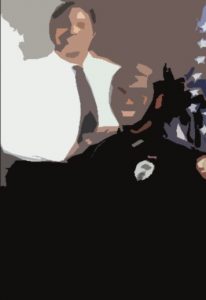 By all biblical accounts, we reason that Deborah fought alongside Barack because of her agreement to go with him, at his request. However, the New Testament Hebrew writer, androcentrically and dismissively, fails to honor her leadership or mentorship on the honor roll of faith in Hebrews 11:32. Instead, Barak is named in her stead along with other male judges such as Gideon, Samson, Jephthah, and Samuel (Heb. 11:32). Deborah, however, pays tribute to Barak and Jabin in her victory song (Judg. 5). Like a good mentor, she “encouraged and strengthened” Barak in his assignment and gave him praise after the mission was completed.
By all biblical accounts, we reason that Deborah fought alongside Barack because of her agreement to go with him, at his request. However, the New Testament Hebrew writer, androcentrically and dismissively, fails to honor her leadership or mentorship on the honor roll of faith in Hebrews 11:32. Instead, Barak is named in her stead along with other male judges such as Gideon, Samson, Jephthah, and Samuel (Heb. 11:32). Deborah, however, pays tribute to Barak and Jabin in her victory song (Judg. 5). Like a good mentor, she “encouraged and strengthened” Barak in his assignment and gave him praise after the mission was completed.
Biblical Model Three – The Prophetess Huldah: Community and Women
She said to them, “Thus says the LORD God of Israel, ‘Tell the man who sent you to me,16 thus says the LORD…(2 Kings. 22:15–16).
 The prophetess Huldah served during Jeremiah’s period. She is believed to have been a preacher and schooler of women who stood in the company of other great prophetesses.[14] Robin Branch notes: “According to Jewish tradition, Huldah had an academy or school house in Jerusalem. She and Jeremiah were kinsfolk and divided prophetic functions between them, Jeremiah preaching to the men and Huldah to the women.”[15] After discovering the indictment filled law book found during the temple renovation, King Josiah needed an intermediary to authenticate the scripture and to petition God on behalf of himself and people of Judah. At his direction, the male priests, scribes and the king’s servant without hesitation went directly to Prophetess Huldah (2 Kings 22:8–23:28).
The prophetess Huldah served during Jeremiah’s period. She is believed to have been a preacher and schooler of women who stood in the company of other great prophetesses.[14] Robin Branch notes: “According to Jewish tradition, Huldah had an academy or school house in Jerusalem. She and Jeremiah were kinsfolk and divided prophetic functions between them, Jeremiah preaching to the men and Huldah to the women.”[15] After discovering the indictment filled law book found during the temple renovation, King Josiah needed an intermediary to authenticate the scripture and to petition God on behalf of himself and people of Judah. At his direction, the male priests, scribes and the king’s servant without hesitation went directly to Prophetess Huldah (2 Kings 22:8–23:28).
Her prominence among the prophets is striking because of her command of Hebrew scripture and scholarship and the communities’ confidence in her ability to speak to and for God. The community understood her to be God’s appointed prophet and mediator even though she served during the period of two mighty male contemporaries, Jeremiah and Zephaniah (Zeph. 1:1; Jer. 25:1). King Josiah and the community “apparently recognized her as a Mosaic prophet, who was capable of interceding with Yahweh” because she exhibited the “behavioral characteristics typical of Ephraimite intermediaries.”[16] As such, she would have filled a socio-political role in the community using her prophetic voice and authority. Yet, some scholars attempt to credit Josiah’s reform to Zephaniah rather than Huldah’s prophecy.[17] This move is also characteristic of silencing women in today’s society where their contributions are oftentimes dismissed and ascribed to their male counterparts, especially if the women are quiet about their own contributions and history and if other women fail to tell their sisters’ stories. She was likely sought over Jeremiah for her expertise rather than her gender.[18]
In Brueggemann’s reading of Moore’s article, he acknowledged Jeremiah’s strong, powerful scribal and political family connections which led him “to think Jeremiah may indeed have been instructed and mentored and been a guiding force for a theological vision that had subversive political implications.”[19] If this is the case, it would be natural to assume that Huldah, Jeremiah’s counterpart, would also have been part of a community mentoring experience and would have also mentored women through her school. If Brueggemann and Moore’s assumptions are correct about mentorship, it is likely that women handed down their stories, scriptural applications, were received, mentored and formed for leadership by others.
Biblical Model Four – Jesus and Mary of Bethany
Truly I say to you, wherever this gospel is preached in the whole world, what this woman has done will also be spoken of in memory of her (Matt. 26:13). But only one thing is necessary, for Mary has chosen the good part, which shall not be taken away from her (Luke 10:42).
While it is obvious that Jesus mentored men amidst an imperialistic Roman and patriarchal Judaic social system, it should be noted that he also mentored women and is today’s ideal model for men and women mentors. Mary of Bethany was one of Jesus’ disciples with whom he shared a one-on-one mentoring relationship.[20] She experienced obstacles similar to those faced by women in ministry today, including implicit societal misogyny, misunderstanding of females’ adeptness for serving in certain roles, women-to-women, and men-to-women conflicts.[21] As her mentor, Jesus practiced the ministry of “encouraging and strengthening.”  Mary sat at Jesus’ feet with scholarly attention to “hear[ing] the Word” herself (ἤκουεν τὸν λόγον αὐτοῦ) (Luke 10:39).[22] Martha’s demand for Mary to leave Jesus’ company and to help her with domestic duties is problematic because it can be perceived as a woman trying to limit another woman to the domestic realm rather than allowing her to shine in a leadership (i.e., ecclesiastical) role (Luke 10:40). Elisabeth Schüssler Fiorenza investigates the conflicts between the two women and Jesus through the hermeneutics of suspicion, remembrance, evaluation, proclamation and lastly imagination.[23]
Mary sat at Jesus’ feet with scholarly attention to “hear[ing] the Word” herself (ἤκουεν τὸν λόγον αὐτοῦ) (Luke 10:39).[22] Martha’s demand for Mary to leave Jesus’ company and to help her with domestic duties is problematic because it can be perceived as a woman trying to limit another woman to the domestic realm rather than allowing her to shine in a leadership (i.e., ecclesiastical) role (Luke 10:40). Elisabeth Schüssler Fiorenza investigates the conflicts between the two women and Jesus through the hermeneutics of suspicion, remembrance, evaluation, proclamation and lastly imagination.[23]
Jesus granted Mary a space among his male disciples. Ben Witherington implies that Jesus’ view on women was outside of the mainstream of his Judaic culture and restrictions because he was willing to have itinerant female disciples. [24] Unlike Witherington, Dr. Cornelis Bennema holds a different opinion of Mary. He stereotypes Mary because she cried to Jesus regarding her brother Lazarus’ death. He typecasts her tears as emotional and characterizes her as having a lack of faith.[25] His approach to interpreting her character and actions is patriarchal and androcentric. He forgets that Jesus wept when he saw Mary weeping; and curiously even though Jesus shows such great emotion, Bennema does not consider him overly emotional or weak. Jesus and Mary’s mentor-mentee relationship was reciprocal, not out of necessity, but because of love and devotion.
Reflecting on the Biblical Models of Mentorship and Research Literature
All four of the mentoring models uniquely promoted the significance of camaraderie, an ability to communicate scripture, and the necessity of clarifying and casting visions via mentor-mentee relationships that “strengthened and encouraged.” Christie Neuger noted that “women’s experiences have largely been left out of the culture’s stories and that men’s experiences and interpretations, which are the dominant cultures have been used as normative in creating theories (and theologies).”[26] Her critiques foreground Mary Ballou and Nancy Gabalac’s outline of harmful adaptations used to disempower women including the following: humiliation, inculcation by way of teaching females to be females (that is, following female norms and assumed personality types), retribution or punishment for breaking the rules of being female, and women trying to make other women follow conscriptions of how females should act and carry out their duties. [27]
Armed with this knowledge, I propose that through the model, women must apply scriptural interpretation and experience to gain the benefits of mentoring within their culture to build confidence and inclusivity. African American women must counter harmful adaptations by integrating their womanist voices, experiences, and exegetical skills and applying them to the text in order to interpret the scripture theologically. Renita Weems purports that the womanist finds her voice in the Bible and with respect to the marginalized and oppressed, much like the African American male. Such thinking is also echoed by Vashti McKenzie, a bishop in the AME church.[28]
Business Mentoring Models
In this step, I examined several business mentoring models used for new employees, students, administrators and youth that could be adapted for use in women in ministry mentoring models. 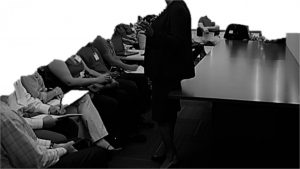 John Maxwell, a business mentoring expert, captured a simple business mentoring lesson in his mimetic model by following this pattern: First “I do it,” then “I do it, and you watch,” then “You do it, and I watch” and finally, “You do it.”[29] This useful method involves periodic evaluations and systematic accountability.
John Maxwell, a business mentoring expert, captured a simple business mentoring lesson in his mimetic model by following this pattern: First “I do it,” then “I do it, and you watch,” then “You do it, and I watch” and finally, “You do it.”[29] This useful method involves periodic evaluations and systematic accountability.
However, some of Maxwell’s other business mentoring suggestions may limit women who participate in an ecclesiastical mentoring model because his model is selective; it includes some and excludes others. For example, he says, “In the case of developing people, you should spend 80 percent of your time developing only the top 20 percent of the people around you.” Further, he believes that mentors should: “Invest your time in people who will give the greatest return.”[30] These approaches in business are driven by financial profit  and business productivity and should not be applied to developing a Women in Ministry mentoring model. If applied to the Women in Ministry in the AME Central Conference, women would automatically not be invested because women do not pastor the top 20 percent of the churches and therefore do not get most of the face time with senior leadership. Women, by most standards, would automatically be left behind and not be considered for mentee opportunities. However, the mere fact that God placed them into ministry indicates that God has already determined their capacities. Ecclesial mentoring must ensure that anyone who aspires to higher leadership is not left behind since ministering impacts people’s lives and souls.[31]
and business productivity and should not be applied to developing a Women in Ministry mentoring model. If applied to the Women in Ministry in the AME Central Conference, women would automatically not be invested because women do not pastor the top 20 percent of the churches and therefore do not get most of the face time with senior leadership. Women, by most standards, would automatically be left behind and not be considered for mentee opportunities. However, the mere fact that God placed them into ministry indicates that God has already determined their capacities. Ecclesial mentoring must ensure that anyone who aspires to higher leadership is not left behind since ministering impacts people’s lives and souls.[31]
While business models may include only the brightest persons for mentorship, the church leadership under the Holy Spirit’s guidance would pair God’s servants based on their willingness and heart for ministry, life experiences or other specific needs. However, Dennis J. Moberg and Manuel Velasquez cite several scenarios in business models as contributing to dysfunctional “mentoring” relationships that could appear in ecclesiastical models: mismatches between mentor and mentee values, differences in work styles, polarizing personalities, mentors neglecting mentees, mentees’ self-absorption, mentors intentionally excluding mentees from important meetings, lack of interest, manipulative behaviors, mentor incompetence, and serious personal problems.[32]
Unquestionably, ethical issues must also be addressed when instituting mentorship models in a ministerial context. Even though the above ethical problems are not the usual characteristics of ministers, dysfunctional situations can unconsciously emerge in a ministerial context that will damage the core commitments, values, and goals of a mentor-mentee relationship. These scenarios could be avoided by assigning a mentoring coordinator to perform periodic evaluations and act as a resource for keeping mentors and mentees focused.
Implementation of the New Mentoring Project
In light of the “themness” mandate, the Women in Ministry (WIM) model was developed with an accompanying curriculum. In the model, I provided a list of A to Z guiding principles for the Women in Ministry mentorship, drawing from the biblical and business model lessons. I then formed a mentoring team of female ministry leaders to conduct the pilot run of the curriculum (two AME Presiding Elders and two WIM Coordinators). The curriculum includes biblical women studies, mentoring training, pairing techniques, and periodic evaluation forms.
The mentoring team participants were selected by their tenure and position within the church, the potential to impact many female clergy, positive attitude, diverse achievements, theological training, and willingness. One ordained nondenominational female minister with eighteen years of experience in ministry participated in the survey in a separate trial run of the curriculum to serve as a control. Her responses were consistent with the AME women responses. The team participated in a seven-week curriculum trial run by teleconferences and with YouTube lectures featuring the biblical and business models prepared by the facilitator. They were also involved in prayer, free discussions and class activities. The YouTube lectures were provided in advance of each of the following series:
- Series 1 – Why is Female Clergy Mentoring Needed
- Series 2 – The Call to Mentor
- Series 3 – Mentorship – The Prophet Moses and Joshua
- Series 4 – Mentorship – The Prophetess Deborah, Mother in Israel, Who Mentored Barak
- Series 5 – Mentorship – The Prophetess Huldah: Community and Women
- Series 6 – Mentorship – Jesus and Mary of Bethany
- Series 7 – Mentorship Preparation
During the first series, the facilitator provided names of several women in scripture and asked the participants if they knew of them, preached about them, or have heard sermons preached which included the women. Through their verbal responses, the participants expressed their own infrequencies and those of others in preaching sermons featuring biblical women characters or doing extensive exegesis of the women. At the end of the last series, each team member completed an evaluation and agreed to implement the curriculum for a period of one year with regular check-ins with the facilitator. The evaluation feedback would suggest that the model will be successful when fully implemented within the Church. Some of the responses were:
- This series gave a great awareness of the need for female clergy to be intentional about mentoring and supporting female clergy.
- It enlightened me of the missed opportunities we fail to take advantage of – to mentor and support each other.
- This series helped me to answer the call to mentorship – to initiate opportunities to be a blessing and an encouragement to female clergy.
- It helped me to take a more serious view of being a mentor.
- The series revealed how little data is recorded on some less familiar females in the Bible. It encouraged me to reveal and include unfamiliar females in my sermons.
- I appreciate the “Themness of God” and celebrate the call of God–to be instrumental in bonding with and leading others to higher positions and deeper relationships with God.
- This series provided the means to get started in becoming a mentor.
- The recorded lectures were very informative.
- The passion was felt, and the passion spilled over to me…. I continue to move forward with enthusiasm and intentionality.
Next Steps:
The AME Women in Ministry coordinators will begin to conduct training and the work of pairing mentors with mentees. The mentoring team functions are shown below:
The mentoring pairs will start the mentorship process with the following activities:
Within the year, the model will be presented to the Bishop, the local AME Women in Ministry, and the Board of Examiners for formal acceptance of the curriculum and future implementation. During that time, I will propose that a permanent Women Studies program to be added to the local AME Women in Ministry and the Board of Examiners components to promote mentorship. The organization is shown below:
Expectations: A formalized “grassroots” intentional ecclesiastical mentoring program will inspire women and encourage men to share the biblical stories of women and to present these stories, positively. By this, we will see a strengthening of the Church.
Conclusion
The interpretation and proclamation of positive women stories from the Holy Scriptures must take place frequently as a generational mentorship process for the sake of both clergy and laity. However, acknowledgment of these women’s prophetic, participatory, salvific contributions must be made beyond androcentric lenses, a courtesy mention, or unintentional oversight. Even though the AME Church will likely continue ordaining women, without programmatic mentoring many will continue to be idle or provide their valuable gifts in other venues that will gladly embrace them. The gifts which God has given to the Church would then not be fully realized. Mentorship is not just meant to meet a quota, but to put forth qualified women for the strengthening of the entire church body. More African American female biblical interpreters and proclaimers, in particular, and other biblical scholars of various races and gender are needed to restore the voices of women in scriptures beyond an androcentric and privileged set of lenses.[33] The mentoring program will help prepare women to excel by supporting each other while working cooperatively with the male colleagues for God’s kingdom–bringing a fresh look at the “themness” that God intended by using the Holy Scriptures to shape the mentoring models.
Footnotes:
[1] Gorden F. Shea, Mentoring: How to Develop Successful Mentor Behaviors, 3rd ed. (Seattle: Crisp Publications, Incorporated, 2001), 3.
[2] I want to thank my project consultants Rev. Dr. Nichole Renèe Phillips and Rev. Dr. Brent Strawn, all my outstanding instructors within the Emory Doctor of Ministry Program, and the mentoring team curriculum trial run participants Presiding Elder Joyce J. Moore, Presiding Elder Valerie J. Walker, Rev. Bettye Watson, Rev. Kimberly Stockton, and Rev. Johanna James.
[3] All translations in this paper are taken from New American Standard Bible (NASB), unless otherwise noted. For the Hebrew words used, see James Strong, Strong’s Exhaustive Concordance (Peabody, MA: Hendrickson Publishers, 2007), accessed through BibleWorks, v.10.
[4] Phyllis Trible, “Eve and Miriam: From the Margins to the Center,” in Feminist Approaches to the Bible, ed. Hershel Shanks (Washington, DC: Biblical Archaeology Society, 1995), 197–201, Kindle. The word ezer is “used most often in the Hebrew Bible to describe God. God is the helper of Israel. And when we hear that God is the helper of Israel, we never think that God is inferior to Israel.”
[5] Walter Brueggemann, Creative Word: Canon as a Model for Biblical Education (Philadelphia: Fortress Press, 1982), 63.[6] Kim Parker, Juliana Menasce Horowitz, and Renee Stepler, “On Gender Differences, No Consensus on Nature vs. Nurture: Americans Say Society Places a Higher Premium on Masculinity than on Femininity,” Pew Research Center, December 5, 2017, accessed February 16, 2018, http://www.pewsocialtrends.org/2017/12/05/on-gender-differences-no-consensus-on-nature-vs-nurture/; Cary Funk and Kim Parker, “Women and Men in STEM often at Odds Over Workplace Equity: Perceived Inequities are Especially Common among Women in Science, Technology, Engineering and Math Jobs Who Work Mostly with Men,” Pew Research Center, January 9, 2018, accessed February 16, 2018, http://www.pewsocialtrends.org/2018/01/09/women-and-men-in-stem-often-at-odds-over-workplace-equity/; Kim Parker and Cary Funk, “Gender Discrimination Comes in Many Forms for Today’s Working Women,” Pew Research Center, December 14, 2017, accessed February 15, 2018, http://www.pewresearch.org/fact-tank/2017/12/14/gender-discrimination-comes-in-many-forms-for-todays-working-women/.
[7] “Women and Leadership: Public Says Women are Equally Qualified, but Barriers Persist,” Pew Research Center, January 14, 2015, accessed February 6, 2018, http://www.pewsocialtrends.org/2015/01/14/women-and-leadership/.
[8] Rickie D. Moore, “The Prophet as Mentor: A Crucial Facet of the Biblical Presentations of Moses, Elijah, and Isaiah,” Journal of Pentecostal Theology 15, no. 2 (April 2007): 56, accessed June 26, 2017, ATLA Religion Database with ATLASerials PLUS, EBSCOhost.
[9] Walter Brueggemann, “A Response to Rickie Moore’s ‘The Prophet as Mentor,’” Journal of Pentecostal Theology 15, no. 2 (April 2007): 174, accessed June 26, 2017, ATLA Religion Database with ATLASerials PLUS, EBSCOhost.
[10] Aleksandra Sandstrom, “Women Relatively Rare in Top Positions of Religious Leadership,” Pew Research Center, March 2, 2016, accessed June 22, 2017, http://www.pewresearch.org/fact-tank/2016/03/02/women-relatively-rare-in-top-positions-of-religious-leadership/.
[11] Mary J. Evans, “Women,” in Dictionary of the Old Testament: Pentateuch, eds. T. Desmond Alexander and David W. Baker (Downers Grove, IL: IVP Academic, 2003), 903.
[12] Moore, “The Prophet as Mentor,” 160.
[13] Judg. 5:7. The אֵ֖ם em in this verse could be translated as “mother” or “a mother.”
[14] Tokunboh Adeyemo et al., eds., Africa Bible Commentary, 2nd ed. (Nairobi, Kenya: WordAlive Publishers; Zondervan, 2010), 463, 528, 550; Bruce K. Waltke and Charles Yu, An Old Testament Theology, (Grands Rapid: Zondervan, 2011), 599; Tamar Kadari, “Huldah, the Prophet: Midrash and Aggadah,” in Jewish Women: A Comprehensive Historical Encyclopedia, Jewish Women Archive, 2009, accessed September 9, 2017, https://jwa.org/encyclopedia/article/huldah-prophet-midrash-and-aggadah.
[15] Robin Gallaher Branch, “Huldah,” in Eerdmans Dictionary of the Bible, eds. David Noel Freedman, Allen C. Meyers, and Astrid B Beck, (Grand Rapids: Eerdmans, 2000), BibleWorks, v.10. Huldah authenticated the law book during Josiah’s reign. She also foretold of Jerusalem’s destruction.
[16] Robert R. Wilson, Prophecy and Society in Ancient Israel, (Philadelphia: Fortress Press, 1980), 59, 156, 220, 300. He identifies Huldah as a “central” prophet.” These types of intermediaries have undergone lengthy validation, with a “degree of wealth, social power, and prestige” and they “regulate social, political, and religious change.”
[17] C. Hassell Bullock, An Introduction to the Old Testament Prophetic Books (Chicago: Moody Press, 1986), 168. Bullock never mentions Huldah but says Zephaniah’s preaching possibly “pricked Josiah’s conscience and helped to initiate the reform.”
[18] Lowell K Handy, “Reading Huldah as Being a Woman,” Biblical Research, Vol. 55 (2010): 25, accessed October 26, 2017, ATLA Religion Database with ATLASerials, EBSCOhost. In discussing Huldah, he says, “‘For Wilson, therefore, Huldah belongs to the Jerusalem elite as a typical Ephraimite prophet and a professional court prophet as well. Her influence can be seen in the reforms by Josiah prior to the discovery of the scroll in the temple.”
[19] Brueggemann, “A Response,” 174.
[20] D. Michael Crow, “Multiplying Jesus Mentors: Designing a Reproducible Mentoring System: A Case Study,” Missiology 36, no. 1 (January 2008), 92, accessed June 24, 2017, ATLA Religion Database with ATLASerials PLUS, EBSCOhost.
[21] Matt. 26:6–13; Luke 10:39–42; John 12:2–17.
[22] Timothy Friberg, Barbara Friberg, and Neva F. Miller, Analytical Lexicon to the Greek New Testament, Baker’s Greek New Testament Library (Grand Rapids: Baker, 2000), BibleWorks, v.10. The Greek τὸν definite article is an accusative masculine singular form. It signifies Mary’s intensive listening at Jesus’ feet to hear “the word” herself.
[23] Elisabeth Schüssler Fiorenza, But She Said: Feminist Practices of Biblical Interpretation (Beacon Press, 1993), 52–76.
[24] Ben Witherington III, Women in the Ministry of Jesus: A Study of Jesus’ Attitudes to Women and Their Roles as Reflected in His Earthly Life (Cambridge: Cambridge University Press, 1984), 114–116.
[25] Cornelis Bennema, “Mary of Bethany: At Jesus’ Feet,” in Encountering Jesus: Character Studies in the Gospel of John, 2nd ed. (Minneapolis: Augsburg Fortress, 2014), 267–274, accessed October 20, 2017, http://www.jstor.org.proxy.library.emory.edu/stable/j.ctt9m0t70.22.
[26] Christie Cozad Neuger, Counseling Women (Minneapolis: Fortress Press, 2001), 2–3, 34. Neuger highlights the fact that feminist and womanist thoughts are similar in transforming “all lives, relationships, system, and cultures so that they are inclusive, life affirming.” She differentiates the womanist’s challenges to include “privileging the African American women’s (and other women of color) experiences, voices, and perspectives in building theory, theology, and practices” as well as integrating and observation of other distinct race, gender and cultural factors.
[27] Neuger, Counseling Women, 47. For the work of Ballou and Gabalac, see Mary B. Ballou and Nancy W. Gabalac, A Feminist Position on Mental Health (Springfield, IL: Thomas, 1985).
[28] Renita J. Weems, “Reading Her Way through the Struggle: African American Women in the Bible,” in Stony the Road We Trod: African American Biblical Interpretation, ed. Cain Hope Felder (Minneapolis: Fortress Press, 1991), 57–77. Vashti M. McKenzie, Not Without a Struggle: Leadership for African American Women in Ministry, 2nd ed. (Cleveland: Pilgrim Press, 2011), 946–947, Kindle.
[29] John C. Maxwell, Mentoring 101: What Every Leader Needs to Know (Nashville: Thomas Nelson Inc, 2012), 115–119, Kindle.
[30] Maxwell, Mentoring 101, 88–89, 159–160.
[31] The AME Church, The Doctrine and Discipline, 11371–11374, Kindle. The AME candidates for ordination are reminded by the Ordination Charge minister that pastoral leadership includes responsibility to care for “the sheep of Christ which he bought with his death, and for whom he shed his blood.”
[32] Dennis J. Moberg and Manuel Velasquez, “The Ethics of Mentoring,” Business Ethics Quarterly 14, no. 1 (2004): 97, accessed July 28, 2017, http://www.jstor.org.proxy.library.emory.edu/stable/3857774.
[33] Brian K. Blount, Can I Get a Witness? Reading Revelation through African American Culture (Louisville, KY: Westminster John Knox Press, 2005), 24. He says, “When the voices of cultures ‘from below’ take themselves seriously enough to propel themselves into the exegetical, hermeneutical, and interpretative debate, the imperium claimed and held by the dominant cultures is broken.”
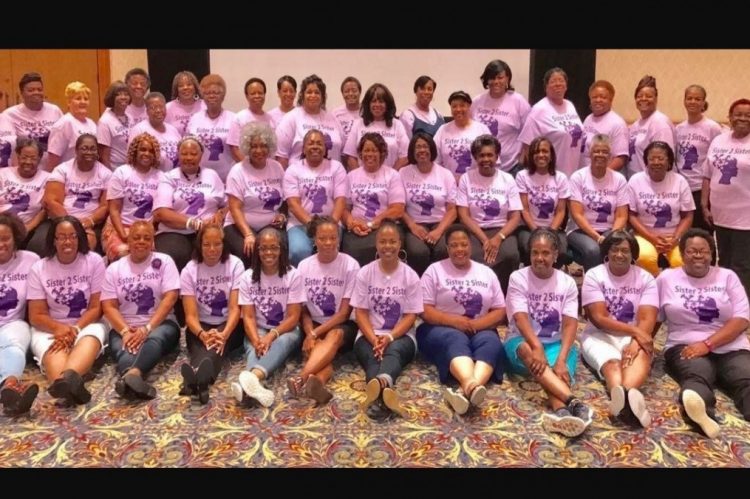
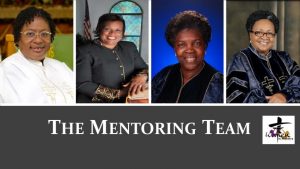
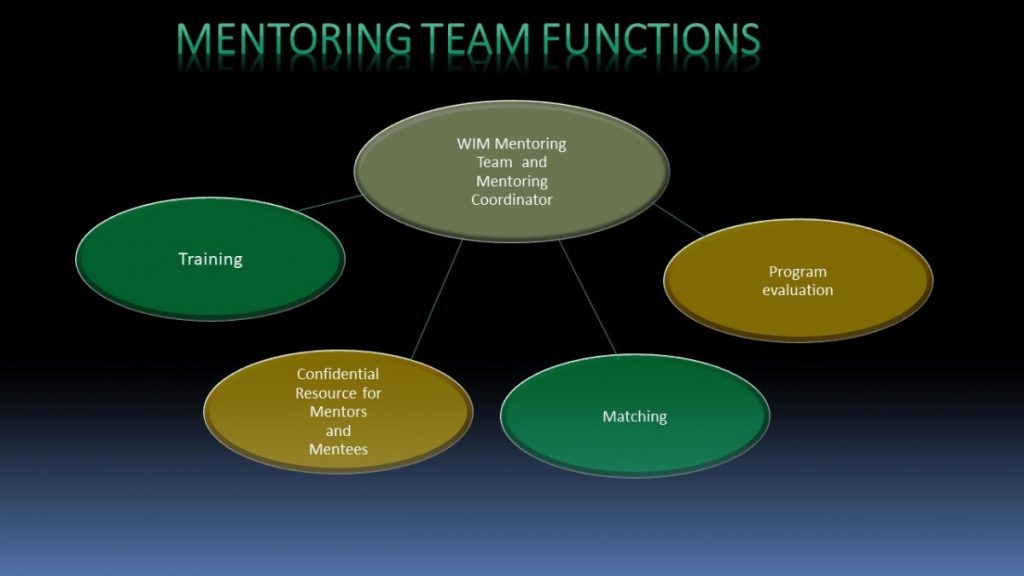
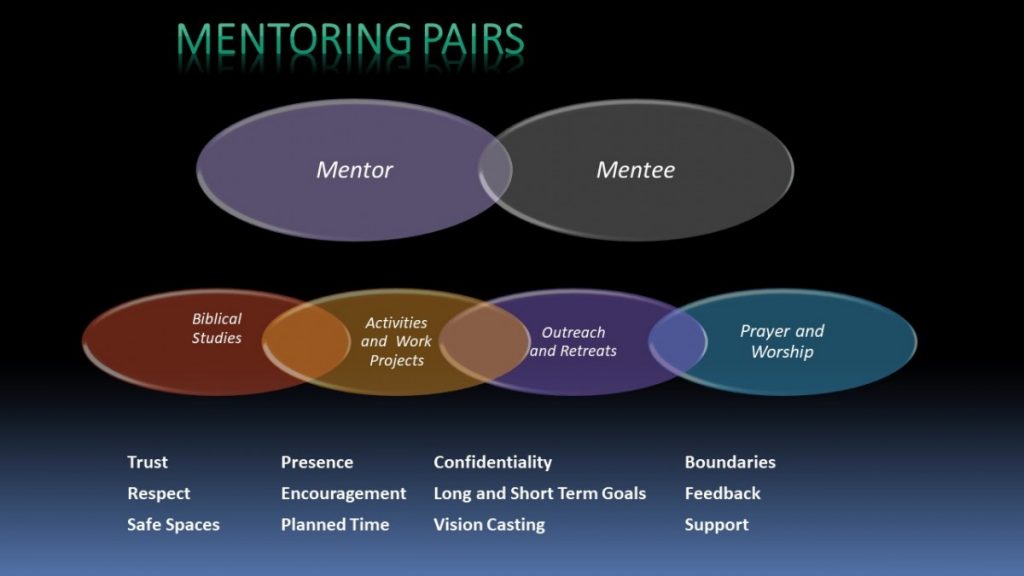
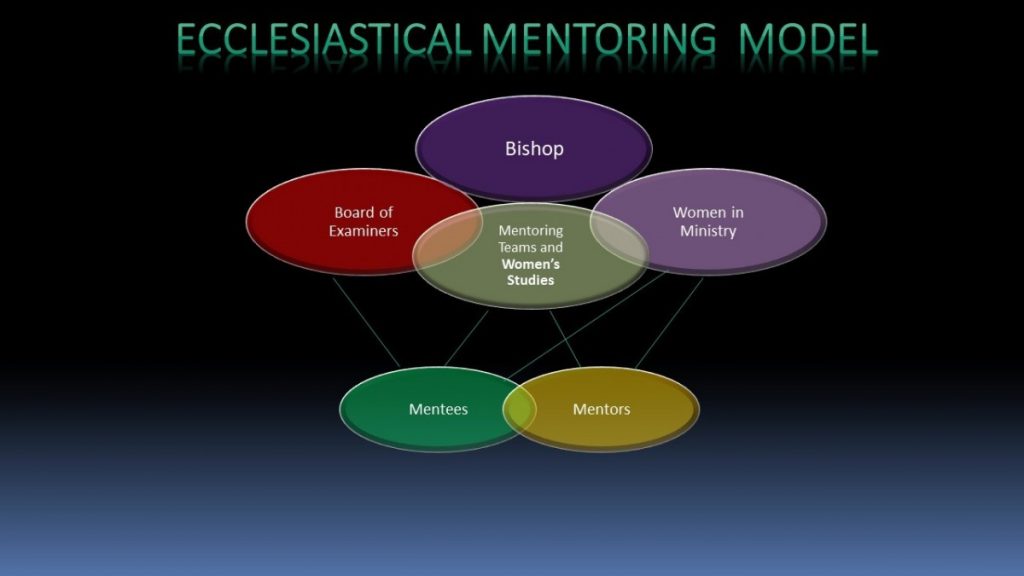
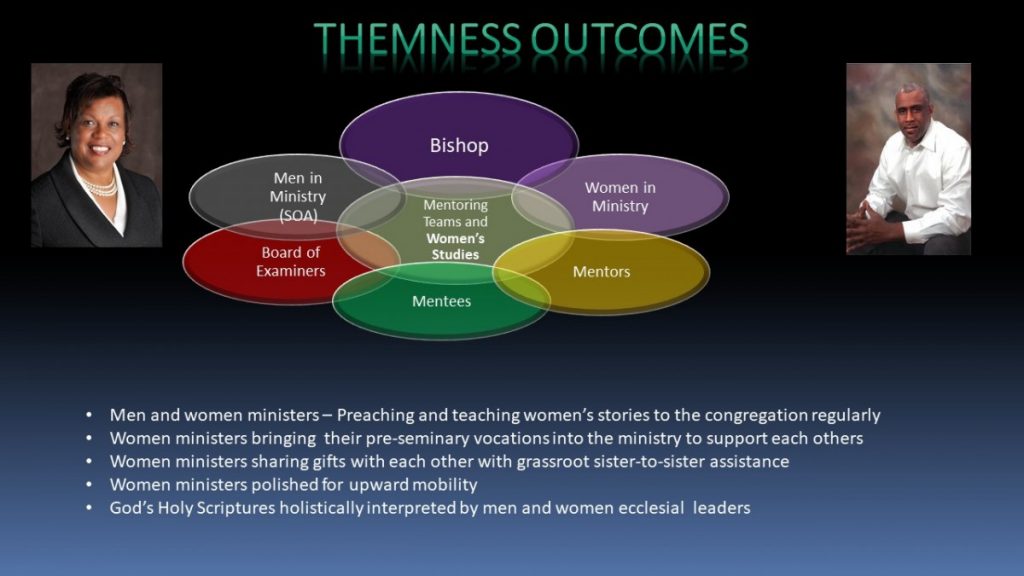

Carolyn, this is wonderful! I would imagine that this will be a great tool for bringing more women into leadership in the AME. Well done, friend.
“Caroline.” Sheesh.
Cynthia – Thanks for sharing. You are a person who “strengthens and encourages” others.
Women are more connected emotionally with each other, much better than when men try to help. So its always a good thing to have women in the leadership position helping their fellow women.
i am interested in the mentorship program